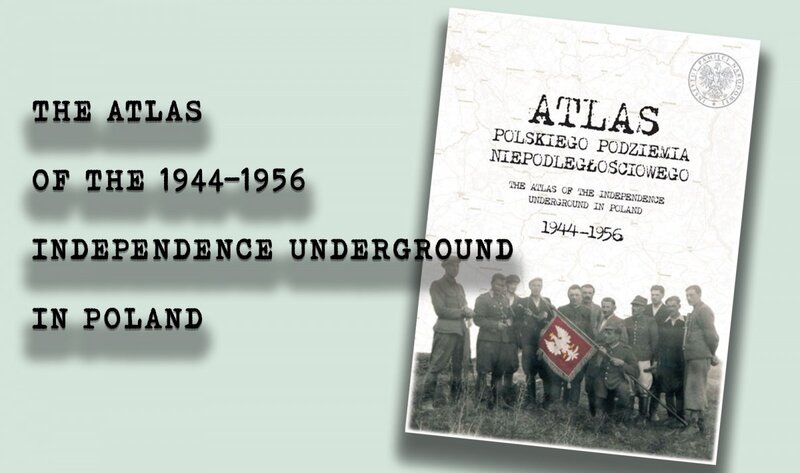“The armed underground, which fought against the Soviet occupation in Poland since 1944, is – apart from the military operations of the Polish Legions, the Polish Underground State and the Solidarity movement – one of the most recognizable symbols of the independence tradition of the past century. It was the last armed uprising of free Poland. The regions that had written down a glorious chapter in the years of the enslavement in the 19th century and during the Second World War under the German and Soviet occupation, also then continued the multi-generational insurrection tradition. (...)” – wrote President of the Institute of National Remembrance, Jarosław Szarek, PhD, in the introduction to the second edition of the book dedicated to the Accursed Soldiers.
The Atlas of the 1944-1956 Independence Underground in Poland, edited by Sławomir Poleszak (editor-in-chief), Rafał Wnuk, Agnieszka Jaczyńska, Magdalena Śladecka, Lublin – Warsaw 2020, the 2nd edition revised and enlarged, 604 pp. The 1st edition of the Atlas was published in 2007 when Janusz Kurtyka was in charge of the IPN.
The Atlas in its revised and enlarged edition presents the range and structures of the underground organisations as well as the military activity of the Polish post-war partisans. The publication is unique due to the detailed data of the presented historical content and the richness of information on the recent history of Poland.
Apart from its cartographic visualization, the publication includes a descriptive and iconographic part. The chronological framework of the book is determined by events important for the genesis and activity of the Polish post-war independence underground. January 1944 – the beginning of the Soviet offensive – which led to the incursion of the Red Army into the territory of the Second Polish Republic, was considered to be the initial moment of the formation of this conspiracy. December 1956, however, is a symbolic moment when the hiding underground soldiers "came out of the forest" under the influence of the October 1956 events. To complete the picture of the anti-communist resistance, the Atlas commemorates those who did not take advantage of this opportunity and remained in hiding still in the 1960s, pursued by the communist organs of repression.
The Atlas of the 1944-1956 Independence Underground in Poland is addressed to everyone interested in the post-war history of Poland. Simple and suggestive methods of cartographic presentation speak to the reader's imagination, therefore the publication will be of great help for both scientists and students. The IPN's President Jarosław Szarek said on the project,
One of the most important projects undertaken by the Institute of National Remembrance, describing the armed struggle for independence against the Soviets and native communists, was an extensive research project devoted to the Accursed-Indomitable Soldiers – and thanks to that, the The Atlas of the 1944-1956 Independence Underground in Poland was published in 2007, developed by several dozen historians . . . The second edition of this important publication has been updated, so it shows the present state of knowledge on this extremely important issue of modern history of Poland.
and,
Treating the topic that arouses social emotions with a grain of salt, we must also notice that the discussions – mainly journalistic – that were going on in the last decade mean that the second edition of The Atlas of the 1944-1956 Independence Underground in Poland falls on a completely different ground than the first edition did. In the past, the dispute was between the people who were restoring the Indomitable-Accursed Soldiers their rightful place in the independence tradition and the post-communist circles, for which the struggle to preserve the assessments from the times of the Polish People's Republic often equalled the defence of their own biographies and their loved ones.
